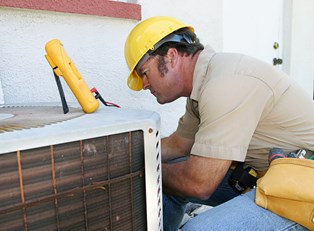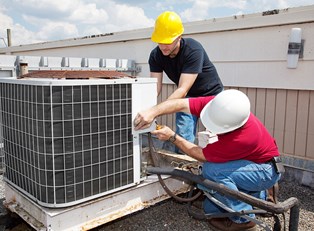An HVAC technician specializes in installing and maintaining climate control and refrigeration systems. These technicians work on a variety of machinery that includes boilers, furnaces, heat pumps, and air conditioning units. If you are considering a job in the HVAC field, you should become familiar with these seven terms that are commonly used within the industry.
- Air Handler
The air handler is the component that regulates and circulates air within the system. The unit contains a blower fan that circulates the air, a mixing chamber where indoor and outdoor air are combined to maintain air quality, a damper to regulate airflow, and the heating and cooling elements that condition the air. The distribution network of air ducts is connected to the air handler, which may also contain an air filter, humidifier, or dehumidifier.
- BTU
A British Thermal Unit, or BTU, is the amount of energy required to raise the temperature of one pound of water one degree Fahrenheit. The industry uses this measurement to describe the power of an HVAC system instead of watts or horsepower. It is typically expressed as BTU/Hour. HVAC systems may also be rated in tons of capacity. A ton of refrigeration is a unit of power equal to approximately 12,000 BTUs. The number of BTUs or tons required to heat or cool a building determines the size of HVAC unit to install.
- Chiller
A chiller is a machine that removes heat from a liquid, typically water or a brine solution, using an absorption or vapor compression process during the refrigeration cycle. The cooler liquid is circulated through a heat exchanger or coils to cool air or equipment as necessary. In a chiller, the refrigerant is always in a liquid state as opposed to a condenser, in which the refrigerant starts as a gas.
- Condenser Unit
A condenser unit is installed on the hot side of an air conditioning unit or heat pump. It changes the refrigerant from a gaseous to a liquid state, which enables heat to be removed from the system, so the air can be cooled. The unit also contains the heat exchanger, a fan, and a compressor.
- Evaporator
While condensers and chillers are designed to remove heat, the evaporator adds heat to the system so it can warm the air inside the building. This component is installed on the cold side of a heat pump or air conditioning unit. The evaporator transforms the refrigerant from a liquid to a gas, which enables it to absorb heat.
- Plenum Space
Plenum space is an enclosed portion of the building that can be used to circulate air. This portion of the building, such as the space above a dropped ceiling or below a raised floor, is distinct from the ductwork.
- Refrigeration Cycle
The refrigeration cycle is the process of mechanically circulating, condensing, and evaporating a refrigerant in a closed loop system in order to transfer heat from one area to another. This thermodynamic process that keeps a refrigerator cold also enables a system to heat and cool a building.



